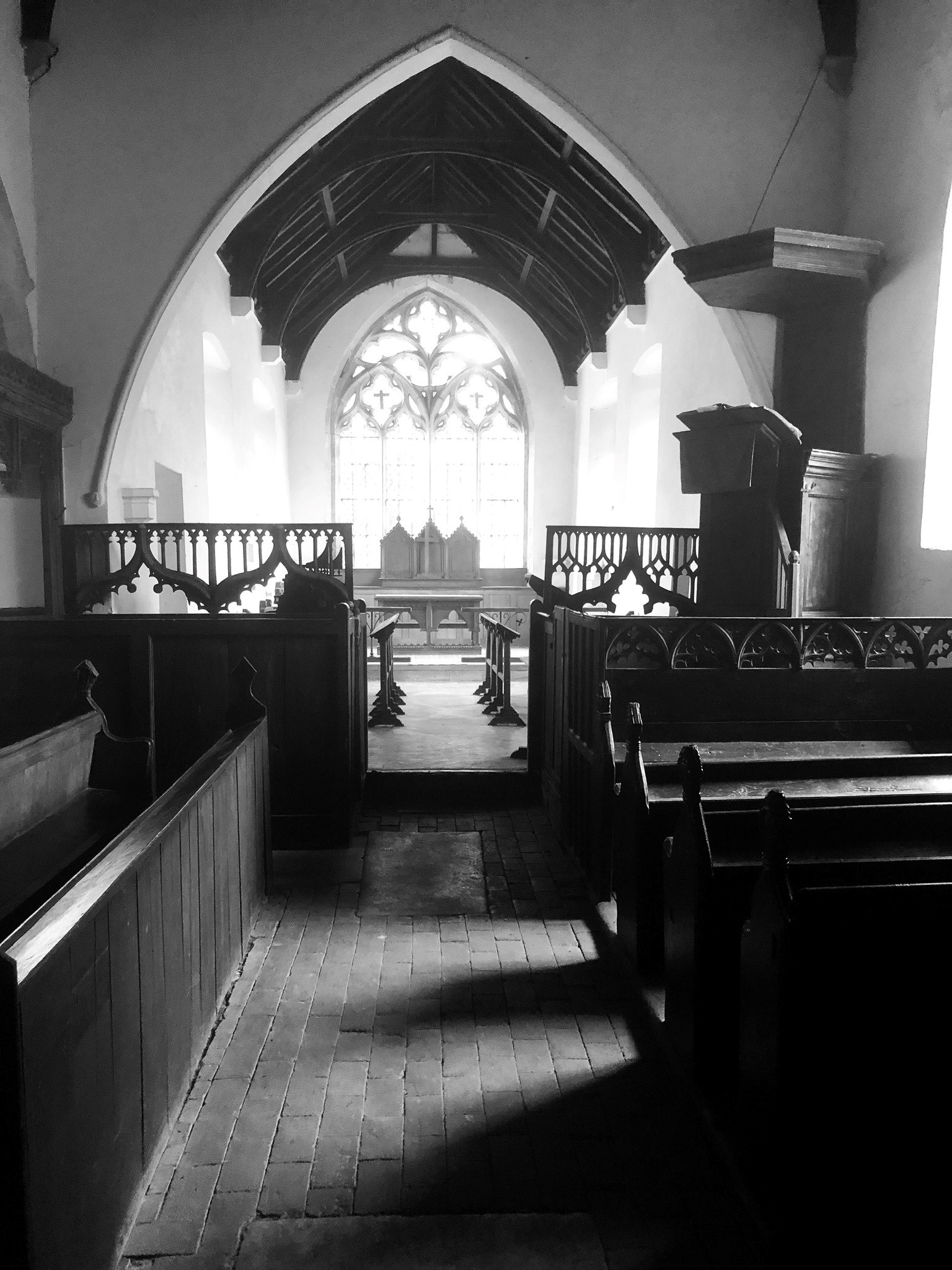Haltham in History

Welcome to Haltham a hamlet at the foot of the Lincolnshire Wolds. The name derives from the Old English holt+ham, meaning "homestead in a wood". It appeared in the 1086 Domesday Book as Holtha, with 15 households and King William I as Lord of the Manor.
Roman Road... 4th Century
The Roman roads branching from Horncastle included the southward road, by Dalderby, Haltham, Leagate, Chapel Hill, and there crossing the river Witham to Sleaford and Ancaster. There is no architectural evidence in the village from this time.
Holtham in Domesday Book…
According to Domesday Book 1085, “Holtham” was among the possessions of William the Conqueror, held by his steward Robert Dispenser. Probably like other parishes in the soke of Horncastle, the manor was held by Gerbald d' Escald, his grandson Gerard de Rhodes (1154 - 1189) whose son, Ralph de Rhodes, (1185 - 1252) sold it to Walter Mauclerk, Bishop of Carlisle (Died 1248) and Treasurer of the Exchequer.
Feet of Fines Lincoln: Henry del Ortiary and Sabina his wife, had an agreement with Ralph de Rhodes, in which the former parties recognise the right of the said Ralph to certain lands in Haltham, Wood Enderby, Moorby, and other parishes in the soke.
Nobility: Marmion & Dymoke are key names in the Scrivelsby & Haltham story through time. Follow this link for the story
Haltham mentioned in documents throughout time...
1333 Post Mortem held at Holtham
A Post Mortem Inquisition, held at Holtham (Haltham),on Friday next after the Feast of St. Matthew (Sept. 21), A.D. 1333; where the jurors say that Nicholas de Thymelby held, with certain other lands in the neighbourhood, two messuages and four acres of land in Thymelby, of the Bishop of Carlisle, and that the said Nicholas died on the Feast of the Purification (Feb. 2nd); and that his son Thomas, aged 19, was heir. (Records of Thimblby).
1561. Parish register entries start in 1561, and contain an entry for the year 1684: "This yeare plague in Haltham."
1853 Methodist (Wesleyan) Chapel,
The Chapel on Main Road was founded in 1853. It is now closed and has been demolished, but we do not know the date of closure.
1870-72, John Marius Wilson's Imperial Gazetteer of England and Walesdescribed Haltham like this:
HALTHAM-UPON-BAIN, a parish in Horncastle district, Lincoln; on the Horncastle canal and railway, near Woodhall Spa station, 4 miles SSW of Horncastle. Post town, Horncastle. Acres, 2, 610. Real property, £, 037. Pop. 215. Houses, 45. The manor belongs to the Honourable and Rev. John Dymoke. The living is a rectory, annexed to the rectory of Roughton, in the diocese of Lincoln. There is a Wesleyan chapel.
1908 Extracts from: The Project Gutenberg eBook, A History of Horncastle, by James Conway.
This village is distant from Horncastle between four and five miles in a southerly direction, lying on the east side of the river Bain. It is bounded on the north by Dalderby and Scrivelsby, on the south by Kirkby and its hamlet of Fulsby, on the east by Scrivelsby, Wood Enderby and Wilksby, and on the west by Roughton. The area is 2380 acres, rateable value £1198. The soil is loam, with kimeridge clay below, and gravel deposits. Population 121, mainly agricultural.
The main roads lead to Dalderby, Scrivelsby, and Horncastle, to Kirkby, Mareham-le-Fen, Coningsby, and Tattershall, and to Wood Enderby, Wilksby, and Revesby. The nearest railway station is at Horncastle.
The Lord of the Manor was formerly the Champion Dymoke of Scrivelsby Court, but the late Rev. John Dymoke sold his estate in this parish, and the manor is now the property of Sir H. M. Hawley, Bart., of Tumby Lawn, in the adjoining parish of Kirkby; W. H. Trafford, Esq., owning the remainder, except 150 acres of glebe.
The benefice was united to that of Roughton in 1741, the two being now of the yearly value of £450, and held by the Rev. H. Spurrier. The patron is the rector’s eldest son, the Rev. H. C. M. Spurrier. There is an award and map of Haltham and Roughton, of date 1775. A village feast is held on St. Benedict’s Day (March 21), he being the patron saint of the church.
There are some peculiar field names; as the Far, Middle, and Near Redlands, arable; the Top and Lower Brock-holes (brock meaning a badger), arable; the Black Sands, pasture; the Top and Low Malingars, arable; the East, West, and South High Rimes, arable; the Pingle, meadow; the Croft, pasture; the Oaks, pasture; Wood Close Meadow, the Old Cow Pasture.
